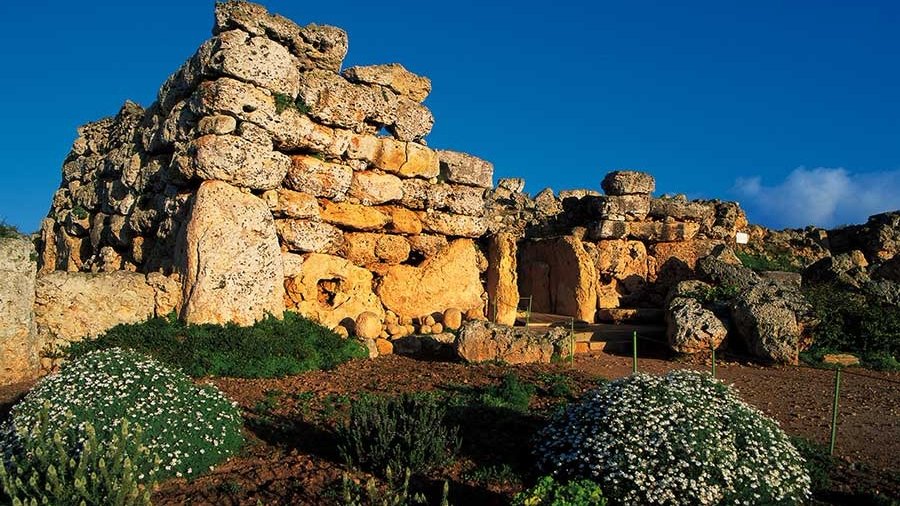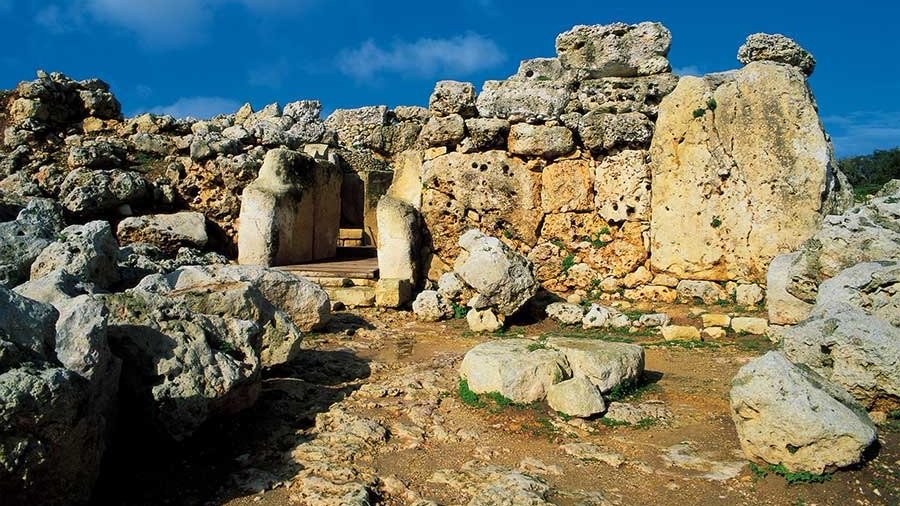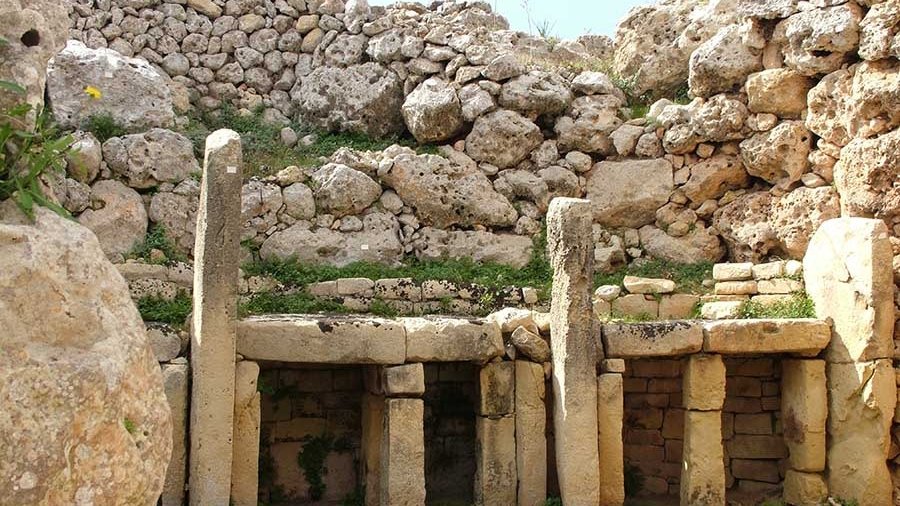Discover a land of giants, and the jewel in Gozo’s archaeological crown.

A UNESCO World Heritage Site, one of Europe’s most important archaeological sites, and an essential entry on your list of things to do in Gozo. Discover the mighty Ggantija Temples.
Legend has it that giants inhabited Ggantija (the name Ggantija is derived from the Maltese word for ‘giant’). The truth is no less compelling.
The two Neolithic Ggantija Temples in Xagħra date back to somewhere between 3600 and 3200 BC. On visiting, the first thing that strikes you is how remarkably complete and well-preserved these sites are. Partly that’s down to the hard-wearing limestone. Partly it’s yet another reason to thank Gozo’s climate.
Inside the complex you’ll find intact altars, doorways and stone hearths. There was also evidence of decorated plaster work, although you’ll now find this in the better-protected surroundings of the Gozo Museum of Archaeology.
Animal bones found at the site, and libation holes, suggest a culture of pagan ritual sacrifice and ceremonial offering. You can explore more finds, and uncover more about the life of the temples at the Interpretation Centre at the entrance to the site.
"The two Neolithic Ggantija Temples in Xagħra date back to somewhere between 3600 and 3200 BC"

